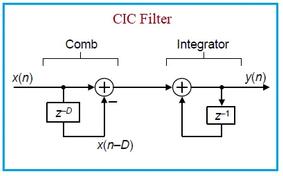MSK Modulation in MATLAB: Code, Explanation, and Results
Advertisement
This document provides a comprehensive guide to Minimum Shift Keying (MSK) modulation using MATLAB. It includes the MATLAB source code, explanations of the code’s functionality, and the expected input and output.
Introduction to MSK Modulation
MSK modulation is a type of continuous-phase frequency-shift keying (CPFSK). It’s closely related to Offset Quadrature Phase-Shift Keying (OQPSK).
- OQPSK limitation: OQPSK can have a maximum phase shift of 90 degrees between transitions (45 degree for each I and Q channel).
- MSK advantage: MSK ensures a 0-degree phase shift between transitions, creating a smoother signal.
- Wave Shaping: Instead of rectangular pulses like in OQPSK, MSK uses half-cycle sine waves to shape the signal.
- Frequency Difference: The frequencies representing logic ‘0’ and logic ‘1’ in MSK differ by half the data rate.
Mathematical Representation of MSK
The following image depicts the MSK equation:

And this image shows the MSK waveform:

For a more detailed comparison, you can refer to MSK versus GMSK, which explains the time-domain waveforms and mathematical equations of both MSK and GMSK modulation.
MATLAB Code for MSK Modulation
Here’s the MATLAB code for MSK modulation:
clear;
clc;
b = input('Enter the Bit stream \n ');
% b = [0 1 0 1 1 1 0]; % Example bitstream
n = length(b);
t = 0:.01:n;
x = 1:1:(n+2)*100;
for i = 1:n
if (b(i) == 0)
b_p(i) = -1;
else
b_p(i) = 1;
end
for j = i:.1:i+1
bw(x(i*100:(i+1)*100)) = b_p(i);
if (mod(i,2) == 0)
bow(x(i*100:(i+1)*100)) = b_p(i);
bow(x((i+1)*100:(i+2)*100)) = b_p(i);
else
bew(x(i*100:(i+1)*100)) = b_p(i);
bew(x((i+1)*100:(i+2)*100)) = b_p(i);
end
if (mod(n,2)~= 0)
bow(x(n*100:(n+1)*100)) = -1;
bow(x((n+1)*100:(n+2)*100)) = -1;
end
end
end
bw = bw(100:end);
bew = bew(100:(n+1)*100);
bow = bow(200:(n+2)*100);
wot = 2*pi*t*(5/4);
Wt = 2*pi*t/(4*1);
st = bow.*sin(wot+(bew.*bow).*Wt);
subplot(4,1,1)
plot(t,bw)
grid on ;
axis([0 n -2 +2])
subplot(4,1,2)
plot(t,bow)
grid on ;
axis([0 n -2 +2])
subplot(4,1,3)
plot(t,bew)
grid on ;
axis([0 n -2 +2])
subplot(4,1,4)
plot(t,st)
grid on ;
axis([0 n -2 +2])
Fs=5/4;
%figure
%periodogram(st)
S = fft(st,65);
PSS = S.* conj(S) / 65;
f = 1000*(-16:16)/65;
figure
plot(f,PSS(1:33))
Code Explanation
-
Initialization:
clear; clc;: Clears the workspace and command window.b = input('Enter the Bit stream \n ');: Prompts the user to enter the bit stream.n = length(b);: Determines the length of the bit stream.t = 0:.01:n;: Creates a time vector for plotting.x = 1:1:(n+2)*100;: Creates an index vector.
-
Bit Conversion and Wave Shaping:
- The code iterates through the bit stream
b. - If a bit is ‘0’, it’s converted to -1; otherwise, it’s converted to 1.
bw,bew, andboware vectors used for shaping the waveforms. The if/else conditions inside the for loops are responsible for creating the offset in the I and Q channels.bwrepresents the original bit sequence,bewrepresents the even bits, andbowrepresents the odd bits.- These are used to create the half-sine wave shaping and staggering of I and Q components.
- The code iterates through the bit stream
-
MSK Modulation:
wot = 2*pi*t*(5/4);: Calculates the frequency term.Wt = 2*pi*t/(4*1);: Calculates the phase term.st = bow.*sin(wot+(bew.*bow).*Wt);: Generates the MSK modulated signal. This is the core of the MSK modulation. The equation combines the odd and even bit streams (bow and bew), along with the time-varying frequency and phase components, to produce the final MSK waveform.
-
Plotting:
subplot(4,1,...): Creates subplots to display the waveforms ofbw,bow,bew, and the modulated signalst.plot(t, ...): Plots the waveforms.grid on;: Adds grid lines for better readability.axis([0 n -2 +2]);: Sets the axis limits.
-
Power Spectral Density (PSD) Estimation:
Fs=5/4;: Sets the sampling frequency.S = fft(st,65);: Computes the Fast Fourier Transform (FFT) of the modulated signal.PSS = S.* conj(S) / 65;: Calculates the power spectral density.f = 1000*(-16:16)/65;: Creates a frequency vector.figure;: Opens a new figure.plot(f,PSS(1:33));: Plots the PSD.
Input and Output of the MATLAB Code
Input
When you run the MSKModulation.m file, the code prompts you to enter the bit stream:

Enter the bit stream as a row vector (e.g., [0 1 0 1 1 1 0]).
Output
After providing the input and pressing “ENTER”, you will see the following plots:
- Bit Stream (bw): The original binary data stream.
- Odd Bit Stream (bow): The odd-indexed bits with pulse shaping.
- Even Bit Stream (bew): The even-indexed bits with pulse shaping.
- MSK Modulated Signal (st): The final modulated waveform.
- Power Spectral Density (PSD): Frequency domain representation of the modulated signal.

Advertisement
 RF
RF








